welcome to the mangroves
| Mangroves are various types of trees up to medium height and shrubs that grow in saline coastal sediment habitats in the tropics and subtropics. Mangroves serve very important functions in the ecology of South Florida. Mangroves have a high ecological role as nursery grounds and as a physical habitat for a wide variety of vertebrates and invertebrates. They recycle nutrients and the nutrient mass balance of estuarine ecosystems. Mangrove leaves, wood, roots, and detrital material provide essential food chain resources, and provide habitat for many wildlife including mammals, birds, reptiles, amphibians, and arthropods. Mangroves have a special ecological function for endangered species, threatened species, and species of special concern. They also serve as storm buffers; their roots stabilize shorelines and fine substrates, reducing potential turbidity and enhancing water clarity. One of the greatest values of mangroves swamps in Florida is their aesthetic appeal. Mangrove plants require a number of physiological adaptations to overcome the problems of anoxia, high salinity and frequent tidal inundation. Each species has its own solutions to these problems; this may be the primary reason why, on some shorelines, mangrove tree species show distinct zonation. Small environmental variations within a mangal may lead to greatly differing methods for coping with the environment. Therefore, the mix of species is partly determined by the tolerances of individual species to physical conditions, such as tidal inundation and salinity, but may also be influenced by other factors, such as predation of plant seedlings by crabs.Mangrove swamps protect coastal areas from erosion, storm surge (especially during hurricanes). Red Mangrove (rhizophora mangle) Also called the "walking tree," can be identified by their characteristic aerial prop roots. Growing closet to the water's edge, their massive root systems provide shelter to a variety of marine life. The red mangrove is often found seaward of the other species and grows in frequently flooded areas. These roots are an adaption to saltwater environment. The tree can take in oxygen directly from the surrounding air. The roots also provide the tree additional support to remain upright in the muddy substrate. The leaves are shiny, thick, leathery and dark green. Red mangrove fruits germinate on the parent tree to form long, pencil shaped propagules which act as seedlings. These seedlings are denominated viviparous. Flowering in spring and summer, although it can occur throughout the year. Although usually shorter than other types, the red mangrove tree may reach up to 50 feet in height. Black Mangrove (avicennia germinanas) Black mangroves are often found in close association with red mangroves and seem to grow in the most salt-rich soils. On the ground around the black mangroves one can find numerous pneumatophores which extend upwards above the mud from the submerged root system. Pneumatophores are essentially the erect lateral branches of an otherwise horizontal root system. They serve the same aerating purpose as the prop roots of the red mangrove. The leaves of the black mangrove are narrow and oblong, dark green above and silver-green underneath. The black mangrove can grow as tall as 60 feet. White Mangrove (Laguncularia racemosa) White mangroves usually grow on higher land, landward of red and black mangroves. They are often found in association with black mangroves. Contrary to the other two species, the white mangrove does not develop prop roots or pneumatophores. The most identifyable characteristic of the white magrove are the leaves. The leaves are thicker and more oval than those of the red and black mangrove, and they are uniform pale green on both surfaces. On either side of the stem one can see two small glands on each leaf. The white mangrove grows as a tree or shrub and can reach a height of 50 meters or more. | |

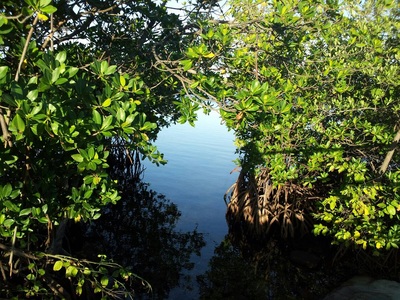

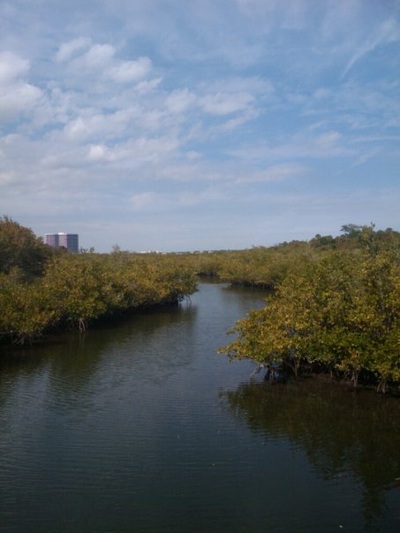
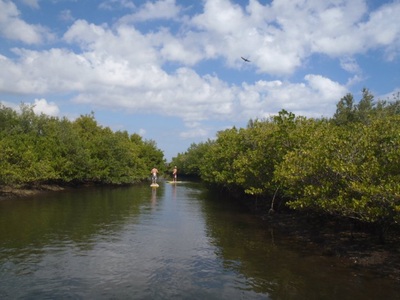

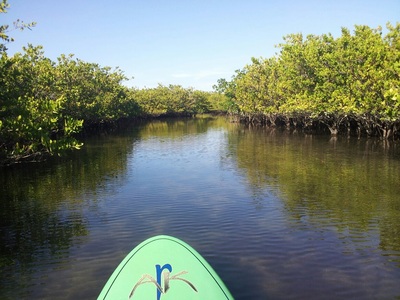
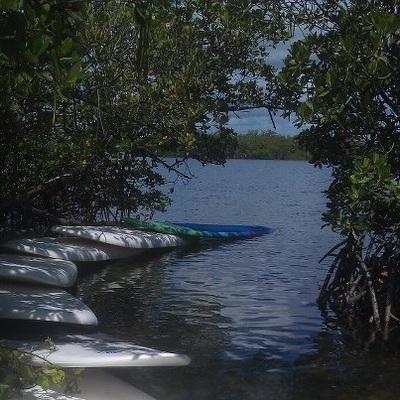
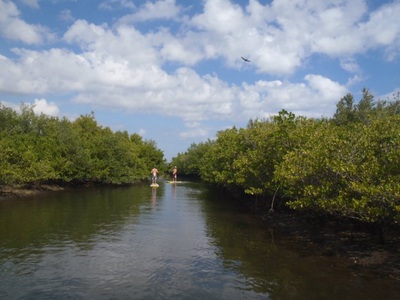

 RSS Feed
RSS Feed